There follows a guest post by the Lockdown Sceptics‘ in-house doctor – a former NHS panjandrum, now in private practice. I asked him to look at the latest NHS data to see if there was anything to support the recent warnings from various SAGE members that Britain is “on a knife edge” and that going ahead with the June 21st reopening would be imprudent.
It is perhaps a sign of the times that senior NHS figures are using Trumpian methods of communication by Twitter and a variety of governmental advisers have been providing freestyle commentary on the airwaves warning that the U.K. is “on a knife edge” in relation to the relaxation of societal restrictions.
To what extent are these warnings supported by the observable evidence?
As regular readers will know, I’m partial to a few graphs and rather enjoy looking at spreadsheets (there’s no accounting for taste) – so let’s examine a few from the recent NHS COVID data.
Firstly, some high-level stuff. Graph 1 shows the COVID hospital admissions from October 2020 right up to this week. That gives a sense of proportion as to how the overall hospital load compares to the winter peak. Note that the current level of admissions are a tiny fraction of those in October last year.
Can readers discern the rise in hospitalisations widely predicted after the reopening of schools in March? No, I can’t either – because it didn’t happen.
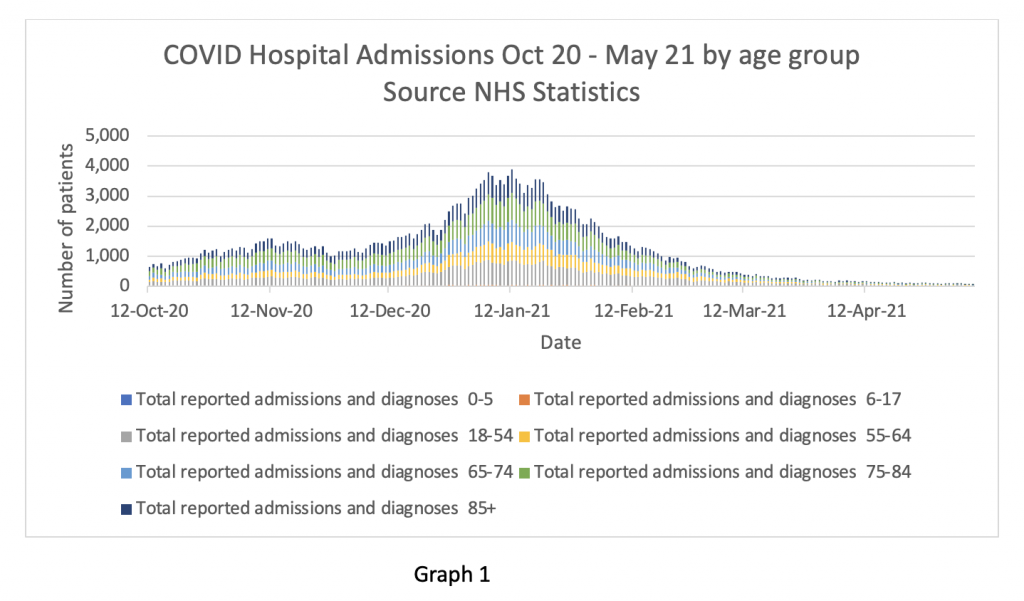
Graph 2 looks at the right-hand end of Graph 1 in more detail – COVID positive hospital admissions from the community between April 7th and May 28th this year. The numbers have been falling gradually throughout April and now seem to be steady at about 100 per day. Bear in mind the scale difference on the Y axis between graph 1 and graph 2. At the end of October, the NHS was admitting about 1,000 per day and at the peak in January, almost 4,000 per day.
Expressing this in ‘Simon Stevens soundbite speak’, there is one patient with COVID admitted every 15 minutes at the moment.
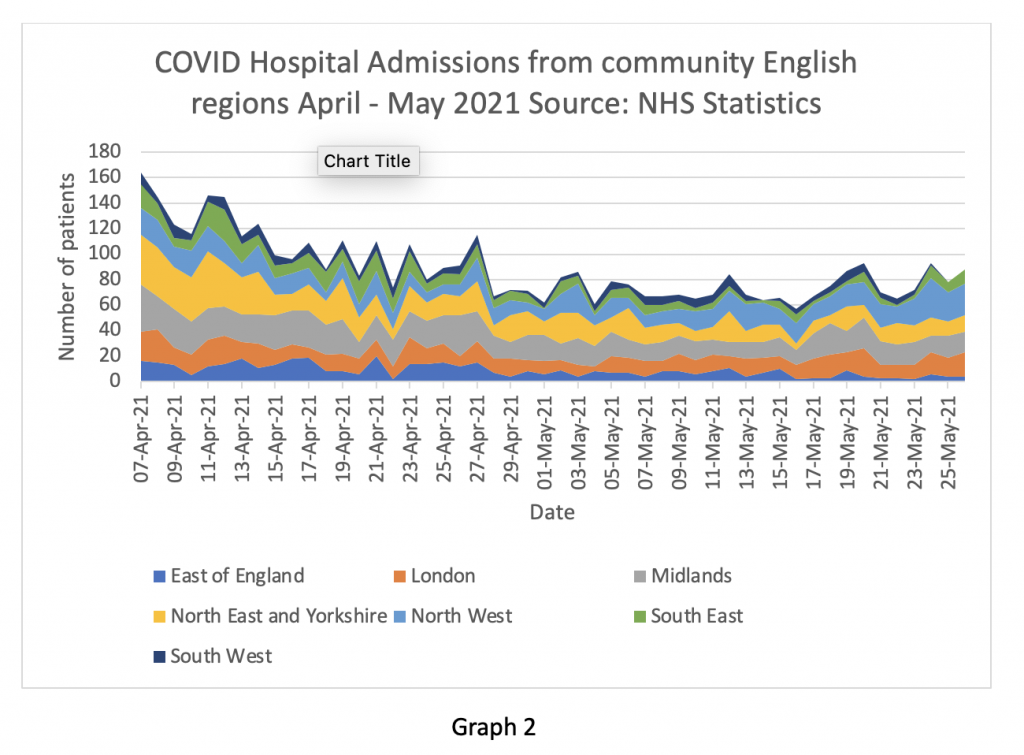
Of course, as regular readers will remember, a hospital can still be in trouble if patients can’t be discharged back into the community at the same rate as they are admitted. So, Graph 3 looks at the discharge figures. Looks like a pretty similar trend to Graph 2 – crucially, admissions and discharges seem to be in balance at about 100 per day across the entire English NHS. (Note the weekend effect seen clearly on the discharge graph – patients aren’t generally discharged at the weekend.)
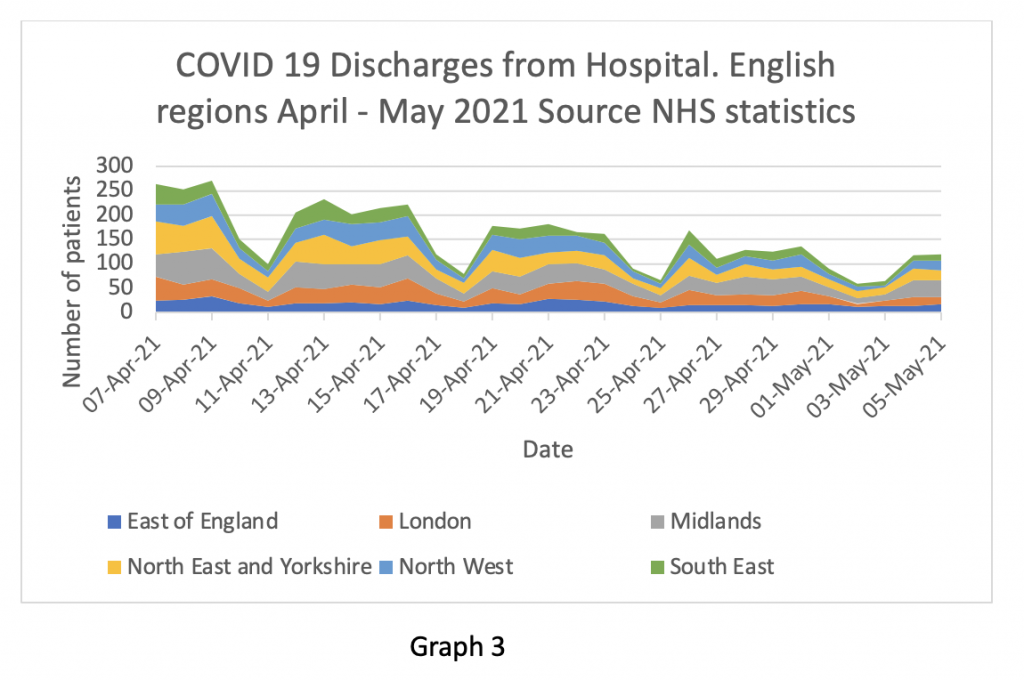
Next, we turn to my favourite area – intensive care utilisation. It’s my favourite metric because it’s a marker of the burden of really serious disease relating to the virus. Graph 4 shows ICU patient numbers. Interestingly, the numbers of ICU cases in the ‘Indian variant’ hotspot – the North West – are running at about 25-30 as of the end of May – a drop from about 50-60 at the beginning of April. How does this fit with the widespread hypothesis that the Indian variant is more deadly and more transmissible than the ‘very deadly and highly transmissible’ Kent variant? My reading of the data so far seems to suggest it isn’t – just as the Kent variant wasn’t more deadly than the original strain from spring 2020. Again, to put this in perspective, in mid-January there were about 3,700 patients in ICU across the English NHS. Today there are just over 100.
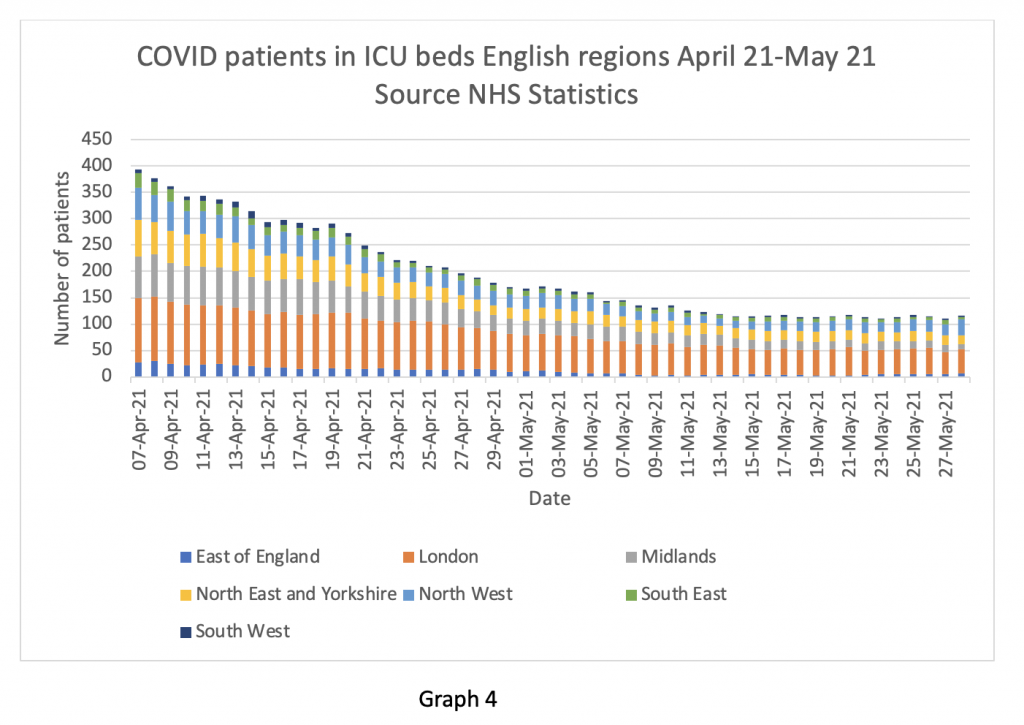
Readers may also recall me examining claims earlier in the year that the ‘Kent variant’ caused patients to be younger and sicker – I couldn’t find any evidence in the figures to support those claims. However, the age profile of admissions now does seem to be skewed to a younger demographic. Graph 5 shows this. The 85+ age group has fallen from about 22% of the total admissions in October 2020 (139/645) to about 14% now (10/69). This is being attributed to the success of the vaccination programme in preventing transmission to the vulnerable elderly – that sounds like a plausible explanation to me.
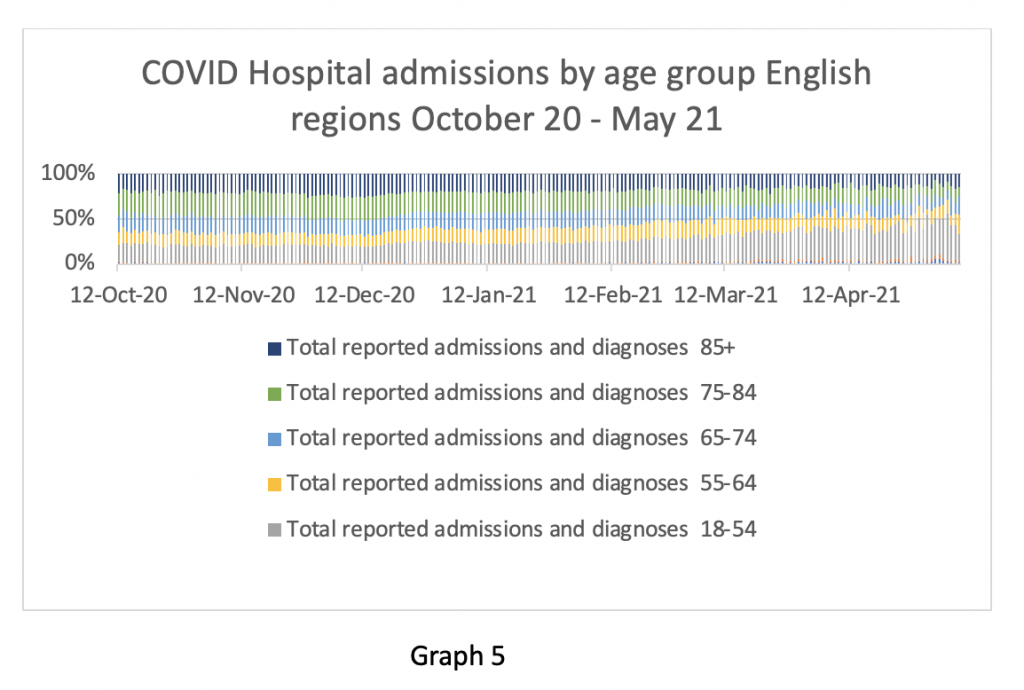
As my final graphic, I include a comparison of the SAGE predictions for hospital in-patients with what we actually see in Figure 1 below. I’m not even going to bother looking at the death statistics in this piece, because the overall death rate in England is below average at the moment – so whatever people are dying of this month, it isn’t COVID-19. I’m also not going to comment further on Figure 1. As ‘my learned friends’ say, it is ‘res ipse loquitur’ – ‘the thing speaks for itself’.
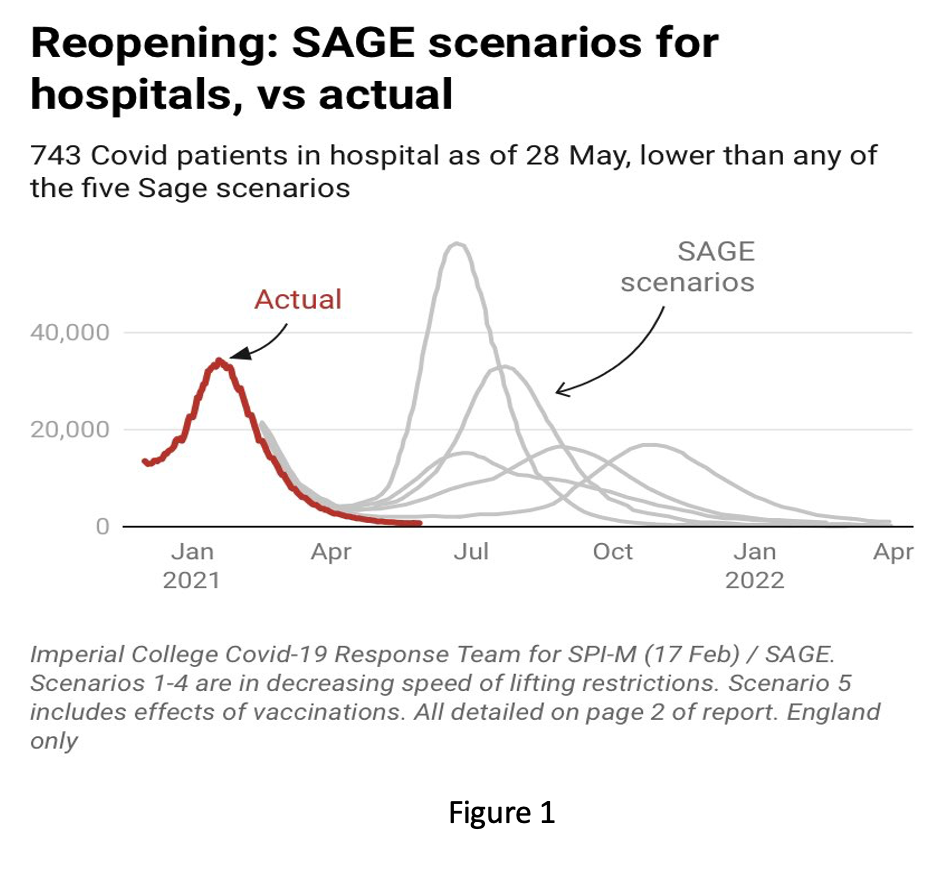
So, to return to the original question – is there any evidence in the hospitalisation data to suggest that the country is “on a knife edge” in relation to COVID-19? If there is, I can’t see it. From my perspective, all the numbers are heading in a downwards direction. All the predictions I have recently seen in relation to an anticipated July spike in hospital cases do not appear plausible. In some ways there is a comforting consistency about the predictions of doom. They have been consistently wrong throughout the entire episode, so it’s quite likely they will be wrong again.
The renowned historian E.H. Carr wrote: “Study the historian before you study the facts.” What he meant was that commentators tend to selectively focus on data that supports their opinion and conveniently ignore information that doesn’t. This is of course the precise opposite of what scientists are supposed to do.
I have noticed in recent weeks that the media have been reporting on the numbers of cases in the community (i.e., positive tests), rather than (as previously) on numbers of hospital admissions or Covid-related deaths. This seems to be an illustration of Professor Carr’s point. The hospital admissions and death data do not support the hypothesis that the Indian variant is about to cause another spike in severe disease, so those figures are not being reported.
It does not matter if the numbers of positive tests rise in the community as long as the hospitalisation rates remain low. My interpretation of the published information suggests that is the case.
So why are the Government’s advisers saying something completely different? I can only think of two broad explanations. It is possible they have information that has not been released to the public for some reason. Or they are selectively interpreting the known information to support an undisclosed agenda.
Over to you, Professor Carr…











To join in with the discussion please make a donation to The Daily Sceptic.
Profanity and abuse will be removed and may lead to a permanent ban.